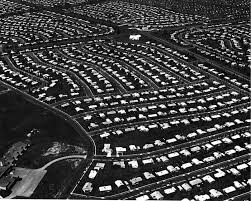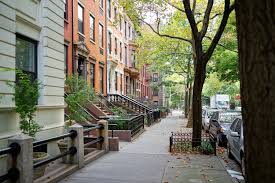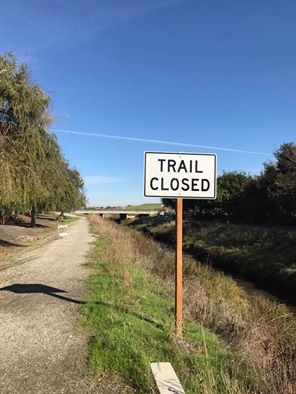Physical Address
304 North Cardinal St.
Dorchester Center, MA 02124
Physical Address
304 North Cardinal St.
Dorchester Center, MA 02124
Because of work obligations, I listened to only about a third of today’s Cato Institute discussion on urban sprawl. I heard some of Randall O’Toole’s talk and some of the question-and-answer period. O’Toole said high housing prices don’t correlate with “zoning” just with “growth constraints.” But the cities with strict regionwide growth constraints aren’t necessarily high cost cities like New York and Boston, but mid-size, moderately expensive regions like Seattle and Portland. He says that if land use rules raise housing prices they violate the Fair Housing Act. Maybe this should be the case, but it isn’t. Government can still regulate in ways that raise housing prices, but just have to show reasonable justification for those policies under “disparate impact” doctrine. He also says cities would be less dense without zoning. Is he aware that most city regulations limit density rather than mandating density? O’Toole says growth constraints are why American home ownership rates are lower than in Third World countries and that the natural rate of home ownership is 75 percent. But why are home ownership rates so low in sprawling Sun Belt cities? For example, metro Houston’s home ownership rate is about 59 percent – higher than New York or San Francisco, but lower than Philadelphia or Pittsburgh. The highest home ownership rates are in Rust Belt regions like Akron, I suspect because of low levels of mobility. Some things he gets right: 1) public participation in land use process is harmful because it leads to more restrictions, not less; (2) the mortgage interest deduction doesn’t make much difference in home ownership rates.

Urban Institute Press • 2005 • 494 pages • $32.50 paperback In Private Neighborhoods and the Transformation of Local Government, Robert H. Nelson effectively frames the discussion of what minimal government might look like in terms of personal choices based on local knowledge. He looks at the issue from the ground up rather than the top down. Nelson argues that while all levels of American government have been expanding since World War II, people have responded with a spontaneous and massive movement toward local governance. This has taken two main forms. The first is what he calls the “privatization of municipal zoning,” in which city zoning boards grant changes or exemptions to developers in exchange for cash payments or infrastructure improvements. “Zoning has steadily evolved in practice toward a collective private property right. Many municipalities now make zoning a saleable item by imposing large fees for approving zoning changes,” Nelson writes. In one sense, of course, this is simply developers openly buying back property rights that government had previously taken from the free market, and “privatization” may be the wrong word for it. For Nelson, however, it is superior to rigid land-use controls that would prevent investors from using property in the most productive way. Following Ronald Coase, Nelson evidently believes it is more important that a tradable property right exists than who owns it initially. The second spontaneous force toward local governance has been the expansion of private neighborhood associations and the like. According to the author, “By 2004, 18 percent—about 52 million Americans—lived in housing within a homeowner’s association, a condominium, or a cooperative, and very often these private communities were of neighborhood size.” Nelson views both as positive developments on the whole. They are, he argues, a manifestation of a growing disenchantment with the “scientific management” of […]

1. This week at Market Urbansim: The Urban Origins of Liberty by Sandy Ikeda Only in the commercial society of the cities, which then as today attracted the ambitious, the talented, and the misfit, did liberty have a real meaning and substance. Only if you can “vote with your feet,” leave the manor or village to pursue your dreams, or simply travel (and have a reason to travel) from place to place, are you really free. One Reason Why Subsidies Aren’t the (Only) Solution by Michael Lewyn The policy paper points out, however, that HUD’s existing project-based and housing choice vouchers could serve more families if the per-unit cost wasn’t pushed higher and higher by rents rising in the face of barriers to new development.” 2. MU Elsewhere Just another reminder to catch Market Urbanist Emily Hamilton debate Cato’s Randal O’Toole on November 29th in Washington, DC, on the question “Should Urban Areas Grow Up or Out to Keep Housing Affordable” (event details) 3. Where’s Scott? Scott Beyer spent his second week in Los Angeles. He wants before leaving on December 11th to organize a dinner party for the area’s many pro-housing activists, so PM him if you’re interested or know someone who is. He published two articles this week–a 5k-word white paper for the Center for Opportunity Urbanism about San Antonio (pg. 40 of this pdf); and one for Forbes titled Globalism — Not Nativism — Is What Made America’s Cities Great Along with the 1 million undocumented immigrants in L.A. County, there is an estimated 500,000 in New York City, 500,000 in the Bay Area, 400,000 in the Houston area, and 260,000 in greater Miami. Impose mass deportation upon these—some of the nation’s most economically dynamic—metros, and the federal government would be ripping out huge portions of their workforce, customer base and entrepreneurial ecosystem. Scott […]
I was rereading the Obama Administration’s surprisingly market-oriented policy paper on zoning and affordable housing, and saw one good point that I had never really thought about. One common anti-development argument is that government should subsidize housing for the poor instead of allowing the construction of upper-class housing that might eventually filter down to the poor (or cause older middle-class housing to do so). The policy paper points out, however, that “HUD’s existing project-based and housing choice vouchers could serve more families if the per-unit cost wasn’t pushed higher and higher by rents rising in the face of barriers to new development.” In other words, high market rents make subsidies more expensive, which in turn means that government can subsidize fewer units with the same dollar. In other words, high market rents make it harder, not easier, for government to subsidize housing.

In The Road to Serfdom, F. A. Hayek tells us that intellectuals and governments in the twentieth century tragically abandoned the road to liberty in pursuit of collectivist utopias. That road stretched at least as far back as the democratic polis of ancient Greece, but it was not always straight and unbroken. Once, it was completely lost, only to be rediscovered centuries later. The idea of liberty emerged in the struggle between the forces of collectivism and individualism. It is the idea that each of us has a rightful sphere of autonomy in which we may be free from aggression. In politics this manifested itself as liberal democracy, in economics as market competition, and in the broader social realm as scientific advance, artistic expression, and religious tolerance. In his concise masterpiece, Medieval Cities: Their Origins and the Revival of Trade, the Belgian historian Henri Pirenne explains just how, long after the fall of the western Roman empire, the liberal idea gradually reemerged and how this was directly tied to the birth of the modern city. The Decline of Cities and Civilization Between AD 400 and 900 cities virtually disappeared from Europe. Even in Rome, which at its height had a population of one million, the population fell to mere thousands – most of whom were either Churchmen or those who served them. Bishops and clerics dominated urban life, while princes, who had little reason to spend time in dreary medieval towns, focused attention on protecting their feudal estates, earning tribute from their vassals, and exploiting the labor of their serfs. Then as now, nobles followed wealth, and in the Middle Ages, as trade among cities dwindled, the basis for wealth went from money to land. Money, liquid and essential for commerce, became superfluous, while control and acquisition of land became […]

1. This week at Market Urbansim: America’s Progressive Developers–The Uptown Gateway Council by Scott Beyer San Diego, too, may be subject to this downzoning trend. Like California’s other destination cities, San Diego has both a fast-growing population, and restrictive land-use regulations that keep housing supply from meeting demand. But rather than reforming their laws in a progressive direction, they’re doing the opposite. The Psychological Consequences Of Rent Control by Sandy Ikeda Fewer cities today practice the sort of rent control Hayek wrote about in the mid-twentieth century. But government meddling in housing continues in the United States and elsewhere. America’s political leaders are fond of proclaiming a citizen’s “right to housing,” the manifestations of which have been Fannie Mae, politically driven subprime lending, and (at times) expansionary Federal Reserve policy. The macroeconomic results have been obvious and disastrous. But let’s not forget Hayek’s “micro-social” consequences. 2. MU Elsewhere On November 29, Emily Hamilton will debate urban housing issues with Randal O’Toole of the Cato Institute and Gerrit Knaap of the National Center for Smart Growth in Washington, DC (event details) 3. Where’s Scott? Scott Beyer completed his first full week in Los Angeles. He will spend Thanksgiving weekend studying in nearby Riverside, one of California’s fastest growing metros. Much of the growth within this Inland Empire region results from poorer people getting priced out of L.A. and San Diego. 4. At the Market Urbanism Facebook Group: Lyman Stone wrote “Appalachia is Dying. Pikeville is Not. Deep in Kentucky’s Appalachian Mountains, a Small City Finds Success“ Michael Lewyn wants a YIMBY conference in NYC Tobias Cassandra Holbrook is curious about the impact of charter schools on urbanism via Asher Meyers, “A leading light of market urbanism? Herman Mashaba – the new mayor of Johannnesburg.” via Chris Kaz Wojtewicz, Does infrastructure investment lead to economic growth or economic […]

The University of Chicago Press has published a “definitive” edition of F. A. Hayek’s The Constitution of Liberty under the editorial guidance of long-time Hayek scholar Ronald Hamowy. Given my interest in urban issues, it’s a good time for me to focus on chapter 22, “Housing and Town Planning.” It has several insights that I really like, but given the constraints of this column, for now I’ll talk about Hayek’s take on rent control. I must confess that it was several years after I became interested in the nature and significance of cities that I learned that Hayek had written anything on what we in the United States call “urban planning.” (Well, that’s not quite true; I did read The Constitution of Liberty as a graduate student, but in those days I didn’t appreciate how important cities are to both economic and intellectual development, so it evidently made no impression on me.) The analysis has a characteristically “Hayekian” flavor to it, by which I mean he goes beyond purely economic analysis and points out the psychological and sociological impact of certain urban policies that reinforce the dynamics of interventionism. The Economics of Rent Control Hayek’s economic analysis of rent control sounds familiar to modern students of political economy perhaps because it’s so widely (though not universally) accepted. This was hardly the case in 1960, when his book was first published. Hayek points out that despite the good intentions of those who support it, “any fixing of rents below the market price inevitably perpetuates the housing shortage.” That’s because at the artificially low rents the quantity demanded exceeds the quantity supplied. One effect of the chronic housing shortage that rent control produces is a drop in the rate at which apartments and flats would normally turn over. Instead, rent-controlled housing becomes […]

1. This week at Market Urbansim: Preservation At The Expense Of Liberty by Sandy Ikeda Using political power to preserve any cherished way of life — trying to stay the uncertain dynamic that washes through social institutions, norms, and conventions — is not only futile but ultimately destructive of liberty. That goes for preserving a historic community as much as preserving current marriage practices; keeping the natural environment pristine as much as maintaining age-old religious practices; or freezing a particular income distribution as much as insisting on keeping certain “undesirables” outside our borders. 2. Where’s Scott? After flying back from San Antonio, where he gave a speech, Scott Beyer relocated to Glendale, a nearby suburb of Los Angeles. This morning he was the feature cover story (paywall) for the San Antonio Business Journal, which described his cross-country trip and upcoming economic report on the city. 3. At the Market Urbanism Facebook Group: Emily Hamilton published an op-ed about her new Mercatus research on smart cities, privacy, and transparency. “Not all smart city innovations are so benign. City governments increasingly have the ability to collect and use their residents’ data.” Bjorn Swenson asks “what’s the Market Urbanism strategy going to be under the Trump administration?” Bjorn Swenson writes a post reflecting on the election considering the disconnection of transportation between the rust belt and coastal areas Michael Hamilton spotted a California NIMBY billboard in his feed Ahmed Shaker asks, “Is what he (Robin Hanson) says about high-rises being less expensive to construct true?”: Why Aren’t Cities Taller? via Rocco Fama: Does New York need another Robert Moses? via Adam Hengels: While You Weren’t Looking, Donald Trump Released a Plan to Privatize America’s Roads and Bridges via John Morris: The Ghost Tenants of New York City “People underestimate the role informal, “black markets” play in providing housing in severe shortage areas.” […]

“Everything passes. Nobody gets anything for keeps. And that’s how we’ve got to live.” –Haruki Murakami I feel lucky to live in Brooklyn Heights. It’s been called New York City’s first suburb. It offers easy access to most parts of Manhattan, thanks to the convergence of several important subway lines, and the view of Lower Manhattan from here is one of the most spectacular in the City. Not surprisingly it’s one of the most desirable and expensive neighborhoods to live in. Along its periphery, warehouses and office buildings are constantly being converted into residences, to go along with townhouses in the neighborhood proper that were built in the early 1800s, as developers try to keep up with a demand that has remained strong even in a slack housing market. In my opinion the Brooklyn Heights district is one of the most charming, and probably the prettiest, in all of New York. So what’s to complain about? Urban Renewal and Landmarks Preservation Three things. First, in 1939 the area just east of the neighborhood underwent the largest urban renewal project of its time, razing 125 buildings over 21 acres and creating “Cadman Plaza,” the first of many so-called “super-blocks” built in major cities across the United States in the mid-twentieth century. Later, between 1947 and 1954, local authorities constructed the Brooklyn-Queens Expressway (BQE) along the northern and western borders. Then in 1965 Mayor Wagner signed a law that made Brooklyn Heights the City’s first historic district (there are currently 100 such districts in New York) and eventually gave rise to the important Landmarks Preservation Commission. Cadman Plaza and the BQE effectively cut the Heights off from the hurly-burly of commercial development in neighboring districts. The Landmarks Preservation Commission has made it very hard and very costly to change the existing […]

1. This week at Market Urbansim: Collective Action Problems Are Similar For Land Use And Schools by Michael Lewyn …it occurred to me that there are some similarities between American school systems and American land use regulation. In both situations, localism creates gaps between what is rational for an individual suburb or neighborhood and what is rational for a region as a whole. The Great Mind And Vision Of Jane Jacobs by Sandy Ikeda As an economist working in the tradition of Mises, Hayek, and Kirzner, what have I learned from Jane Jacobs? In short: Densely populated settlements that embody a wide diversity of both skills and tastes are the incubators of dynamic social development and entrepreneurial discovery—Density + Diversity Development and Discovery—and that government intervention tends to undermine the free air of cities in which even ordinary people can do extraordinary things. Kotkin And The Atlantic- Spreading ‘Localism’ Nonsense Together by Michael Lewyn This is as true in California as it is anyplace else; when Gov. Brown tried to make it easier for developers to bypass local zoning so they can build new housing, the state legislature squashed him. Local zoning has become more restrictive over time, not less. 2. Where’s Scott? Scott Beyer completed his San Diego stay, and is heading today into the Mexican border city of Tijuana, before moving to Los Angeles. He wrote 4 articles this week: San Antonio’s Growth Part of a Macro-Level U.S. Trend for The Bexar Witness & When Texas Stopped Looking and Feeling Like Mexico for Governing Magazine & Here’s Why Your Home Is 24% Overpriced & Philadelphia’s SEPTA Transit Workers Go On Strike…Again for Forbes. There is an entire eco-system of private transit options, big and small, that exist in most cities, including Philly. Many of them have already released formal game plans for this strike, showing the […]